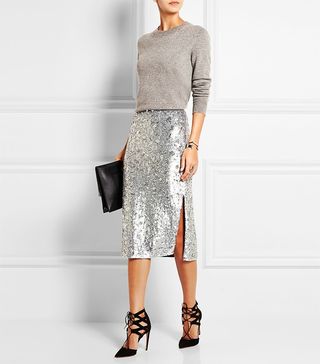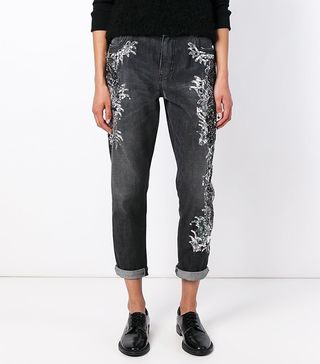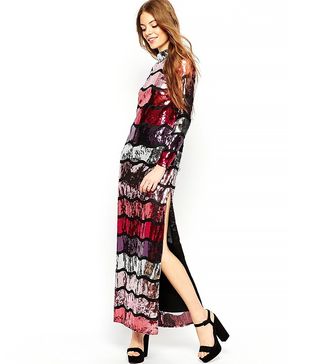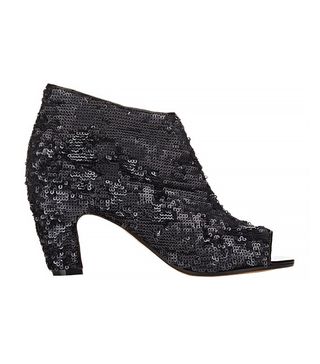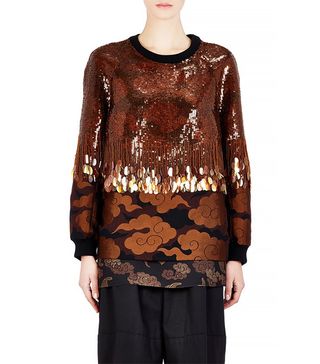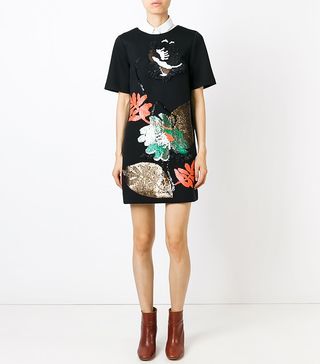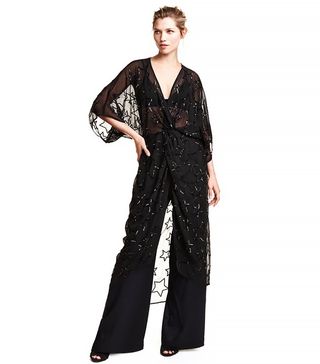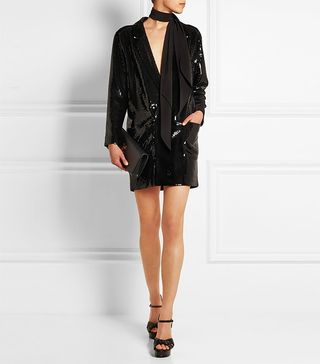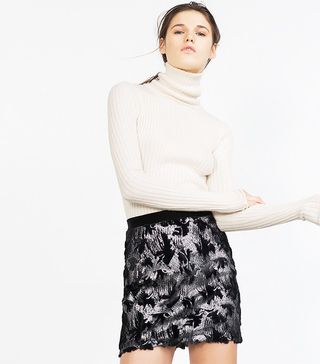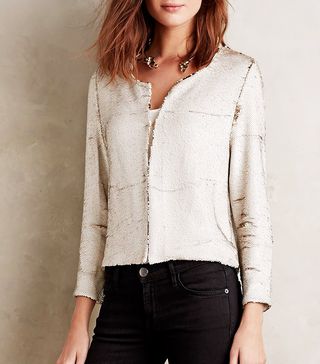The Surprising History of Sequins


When we think of sequins, the first thing that comes to mind is usually New Year’s Eve—a holiday when people venture out in their most shimmery separates to celebrate the coming year amid even shinier decorations. Sometimes, this can verge on overkill, but as we’ve shown before, there’s a way to wear sequins that won’t render you a cliché.
What we don’t think about when we think of sequins is their history—as in, where on Earth did these shiny little guys sprinkled throughout our wardrobes come from? Was Michael Jackson—a major arbiter of the style—responsible? Or, perhaps, a ’70s/’80s-era designer? Not even close, actually!
We dug around for the answer, and what we found was entirely unexpected: Sequins can be traced all the way back to the one and only King Tut, who was alive from 1341 to 1323 B.C. According to Smithsonian magazine, when Tut’s tomb was discovered in 1922, his garments were covered in “gold sequin-like disks.” Historians believe they were meant to ensure his financial stability in the afterlife.
Evidently, the monetary association held up, as the word sequin is derived from the Arabic sikka, which stands for “coin.” Sewing these discs—usually made of gold or other precious metals—onto clothing worked as a status symbol, and in some cases, they doubled as actual coins for trading. In Egypt, India, and Peru, they were also considered capable of warding off evil spirits.
Eventually, they become purely decorative, popping up on the intricate garments of Victorian women and men and experiencing a resurgence in the 1920s after the discovery of King Tut’s tomb. Funnily enough, since sequins were made of gelatin at the time, it was not uncommon to have your sequins melt if your body grew too hot or you got caught in the rain. Let’s pause to imagine all the NYE outfits that would go to waste if that were the case today.
Luckily, it’s not. A man named Herbert Lieberman worked with Eastman Kodak (yep, of that Kodak) to develop acetate sequins inspired by the acetate film the company had been using. Still quite flimsy, they were eventually coated in Mylar and then dumped entirely for the vinyl plastic renditions we’re used to today (although it should be noted we’re partial to the edible version).
So sequins may occasionally get a bad rap, but next time someone shames you for going all out, feel free to come at them with a little King Tut defense. If that’s not great fodder for holiday party conversation, we’re not sure what is.
Scroll down to check out some of our favorite sequined street style looks…





Scroll down to shop some of the coolest sequined items on the market.
What fashion item would you like to learn about next? Sound off in the comments!

